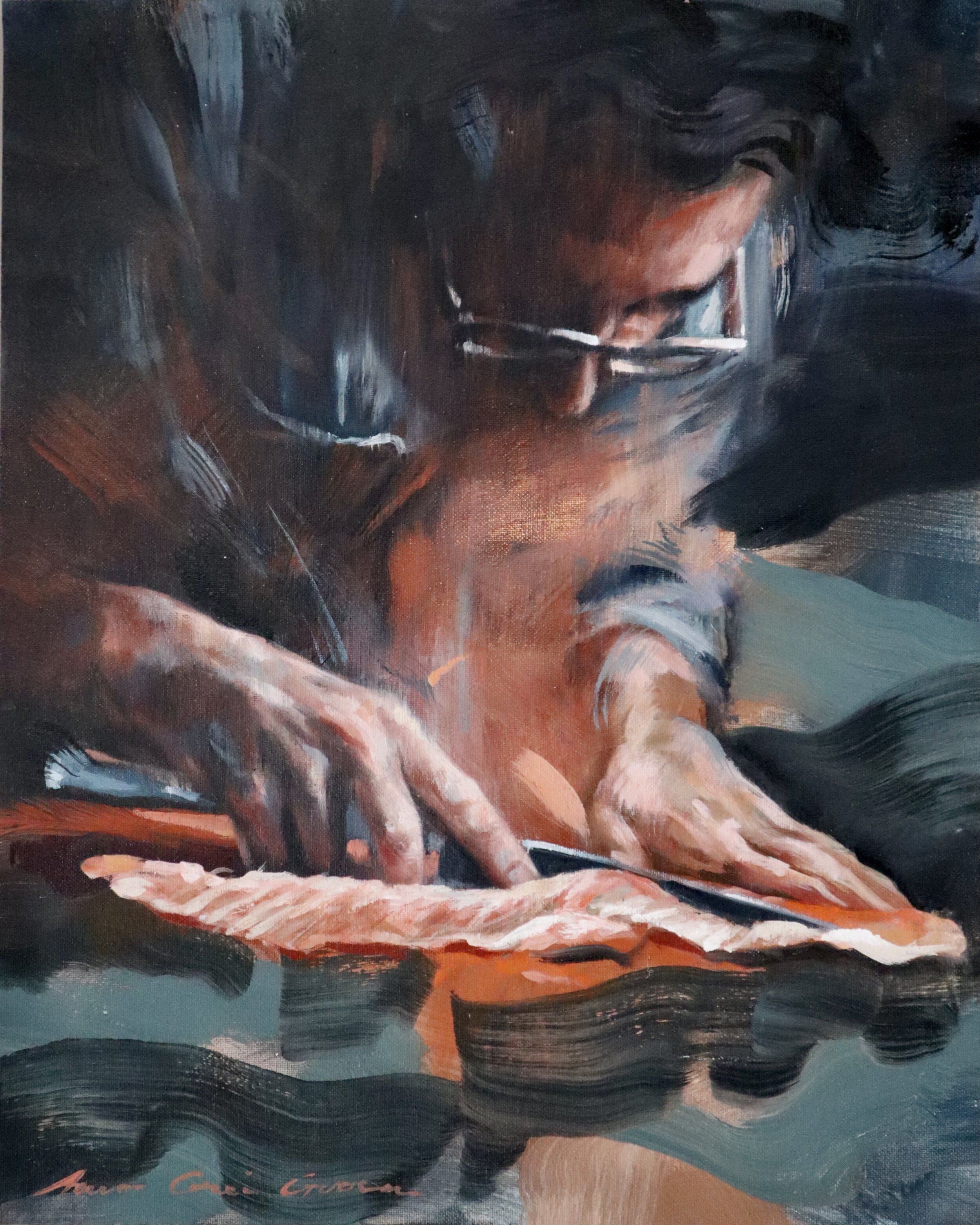What an absurd question when the hallmark of humankind is creativity!
Creativity is just a muscle that needs to be exercised. It was built into us so that we can survive difficult times, and 2020 certainly calls for creative fitness!
Debunking myths and defining creativity:
It’s not magic, it’s just a skill, and like most things in life, anyone can improve at if they give it the time and effort. Draw understanding of the world around you, connect those observations to your existing knowledge reservoirs, and imagine new applications of your knowledge on the world.
Doing is key to creativity, not just dreaming. If you’re imagining a series of artworks, don’t talk about it, paint them. If it’s an idea, go out and do the research to prove it. If it’s a new process, try and test it to see if it works. If it’s an object, build it.
3.If you think you are creative, you’re more likely to actually be creative. Acting and thinking differently actually makes you different: ‘ Neurons that fire together, wire together’. According to Harvard Business Review research, anyone can innovate, if they choose to. It’s done by choice, not chance.
Above is the quilt I made when I turned 40, it celebrates finding beauty in fragmented body parts (because it’s all down hill from here!)
3. Creativity is not ‘Originality’. This is a useless word that trips people up, so ditch it from your vocabulary!
‘I don’t believe in originality. It is just one more fetish made up in our time, which is speeding dizzily to its collapse. I believe in personality reached through any language, any form, any creative means used by the artist. But out-and-out originality is a modern invention and an electoral fraud.’
The above series of Momento Mori portraits were an experiment in alternative materials, I used cut up pieces of evening gown net that reminded me of death shrouds. An unusual drawing medium but it added to the content
4. Focus on connecting networks, not labelling your self a left or right brained person. Yes, different parts of the brain have different functions, but many say that ‘the left brain as the creative side’ vs. ‘the right brain as the analytical side’ is pseudoscience. When it comes to creativity, neuroscientists have identified three large-scale networks.
· The executive attention network helps you pay attention and focus
· The imagination network allows you to daydream or imagine yourself in someone else’s shoes
· The salience network that let’s you identify when things you have buried deep in your brain are salient to the world around you
The more active these networks are in your brain, and the more they work together, the more creative you are. As Steve Jobs explained;
“Creativity is just connecting things. When you ask creative people how they did something, they feel a little guilty because they didn’t really do it, they just saw something.”
5 ways to flex your creativity muscles
1. Schedule it like exercise! Make room for practicing creativity on your own or join some kind class. Try something outside of your creativity comfort zone. If you’re already creative in one field, try another one! Switching tasks has been shown to increase creativity—and when you’re switching between inherently creative tasks, it’s an even greater benefit. Changing things up allows you to make unexpected connections between your knowledge banks and the new environment.
2. Be bored, it leads to daydreaming, which activates your brain’s imagination network. Studies show that being bored enough to daydream, sparks creative thinking and generates ideas. The first time I went plein-air drawing in the Aussie bush, I was shocked by my temptation to add extra stimuli from music or podcasts instead of just becoming still and open in quiet contemplation.
3. Going for a walk (especially outdoors) is one of the best things you can do to boost your creativity and encourage new ways of thinking. It’s been shown to increase creative output by up to 60%. Get your earphones and listen to “happy music,” which research also shows facilitates divergent thinking and delivers a potent boost to creativity.
4. Keep a journal. Pay attention to, and record new ideas that come to you. When an idea, or even a small component of an idea, comes to you, start making it a point to preserve it. “Capture now, evaluate later”. Like a snowball, one idea often leads to another. If the idea isn't appropriate for your current work, set it aside to work on later or implement it in a future project. Research has shown over and over again that capturing your new ideas is likely the most valuable aspect of boosting creativity.
5. If you’re trying to get “unstuck” on a project…try approaching the project at an unexpected time. Usually we tackle analytical problems when we’re at our peak level of attention and focus, but more creative problems actually benefit from a more relaxed mind. A recent study found that you’re more likely to solve “insight problems” when you are least alert because thinking creatively requires different areas of the brain.
Creativity is available to everyone and is there to help us live in possibility and abundance rather than limitation and scarcity. Don’t waste time questioning your creative ability, rather get creatively fit!
Go out, get curious, get bored








